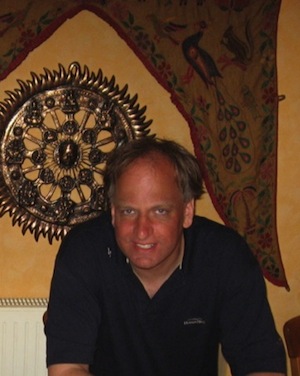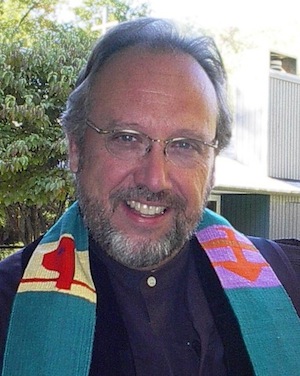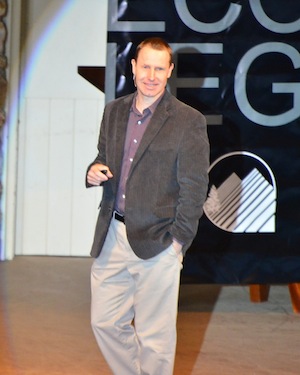
This week’s mini-series is a collaborative effort with Ecclesio. Check out these and other articles at www.ecclesio.com.
Climate change is upon us. Regardless of the symptoms, the diagnosis by experts is almost unanimous; the planet is warming and there will be consequences.[1] Some would even argue that we have passed the point of no return – there is nothing that can be done to repair the damage already inflicted. But, from my faith perspective and prayer, just as climate change is upon us, so is God’s providence. And so it has been from the beginning.
Or at least, from the beginning of the industrial revolution, when for the first time in history, pollution of the atmosphere became an observable phenomenon and a threat to the well-being of creation.[2] During this period, fossils fuels – the primary cause of global warming – began to be pumped into the atmosphere in quantities that have only increased over the past century as industrialization became not just a Western phenomenon but also a global one. Yet, at almost the same time as the very first coal factories and steam engines were churning out black smoke in England, scientists – including a minister of the Church of Scotland[3] – were making discoveries that would be first steps in the long journey toward solar technology.
Then in 1883, an American by the name of Charles Edgar Fritts invented the world’s first functional, intentionally made solar cell.[4] Perhaps it is for this reason that Presbyterian author Henry Van Dyke could write as early as 1921 in his book Camp-fires and Guide-Posts,
[S]ome say, the present prosperity of [hu]mankind is illusory and transient, and some coal-less day we shall all freeze or starve to death…Perhaps – perhaps! Yet the prophecy does not curdle my marrow. As the Kingship of Coal was not primeval, so its perpetuity is not assured. Nor would the dethronement of the present monarch necessarily be final and fatal. A competent Regent has been discovered in Oil. Behind him, like a sturdy heir-apparent, we see the rising head of Electric power. In the dim distance we discern various heirs presumptive, — Sun-heat, yet unexploited; Tide-force yet unharnessed…[5] [emphasis added]
The modern era of photovoltaics started in 1954, when researchers at Bell Labs in the US accidentally discovered that pn junction diodes generated a voltage when the room lights were on. Within a year, they had produced a 6% efficient silicon solar cell.[6] Today, there are dozens of solar technologies that are highly effective. As factories, cars, trains, and other technologies dependent on non-renewable resources have been polluting the atmosphere, more and more green technologies have been invented and are being improved. God’s providence has been and continues to be at work alongside the sinfulness of humanity.

My late father, the material scientist Dr. Praveen Chaudhari, was part of God’s providential plan, though perhaps in a way unbeknownst to him.[7] When I was a kid, he would take me to his laboratory at IBM (T.J. Watson Lab). Though I couldn’t have articulated it at the time, I believe now that when I watched my father in his lab, I was watching a man performing his acts of worship and living out his vocation.
How much does any real vocation serve both spiritual and material purposes? He served as a research director in a company that was started and run by Thomas John Watson, Jr. and Sr., both Presbyterian elders if also devout businessmen. IBM essentially invented the microelectronics industry and as such contributed greatly, if indirectly, to the advancement of the solar-industry. Towards the end of his life, my father wrote a patent application for solar cells, which he had hoped to develop and commercialize. When cancer robbed him of that opportunity, I assumed stewardship of a significant invention and formed a company to commercialize it.
There are many renewable, “green”, technologies besides solar, but – at least recently – solar has gained the most attention due to its dramatic drop in cost. It is a little-known fact, however, that inventions and improvements in core solar technologies have been much less dramatic. The common perception amongst material scientists is that improvement in solar cell technology has actually been relatively slow. When I speak of core technology here I am referring to the actual solar cell and not the technology surrounding it, such as converters, racks, as well as financing models like SolarCity’s, etc. The latter are usually referred to as “Balance of System” or “BoS” costs in the industry.
___________________________________________
Though I couldn’t have articulated it at the time, I believe now that when I watched my father in his lab, I was watching a man performing his acts of worship and living out his vocation.
___________________________________________
While the “BoS” costs have dropped and continue to drop significantly, the module costs have changed relatively little. I believe my company’s technology will change that equation. Our main goal is to accomplish what many scientists have been working to achieve for decades — namely, deposition of a single crystal semiconductor film like silicon on an inexpensive substrate like ordinary soda-lime glass. This has never been done before. The promise of a single crystal layer is a potentially great gain in efficiency and the cost savings that goes with that.

A side benefit to scientific research lies in fascinating symmetries which come to light . One of the surprises I had in this research and development process concerns a common measurement in the material science community called Electron Backscatter Diffraction (EBSD), which shows that a single crystal of silicon looks like the following:
See anything familiar? Privately I refer to this project as “single christos” – an observation I can share in this non-secular forum.
On this journey I see a recurring scientific/theological theme. In our research and development we are aiming for results that have what is called a Miller Index of [111] – and of course I can’t help think of the Trinity in this regard. If this technology can be part of solar technology’s prevention of climate catastrophe, will not every crystal be part of God’s work?
Science and theology may, as Thomas F. Torrrance has written, have an intimate relationship indeed.[8] Just as theology deals with the reality of God and spirit, so material science deals with the reality of matter – God’s material world and creation. Do these not go together in an incarnational or sacramental vision?
——
If climate change has facts with predictable consequences, commerce – at least with regard to solar technology – most certainly does not. Commercialization of solar technology is NOT a science. A Presbyterian friend of mine who has been involved in installation of solar panels in Florida described it best when he called the industry “chaotic.” On any given day, a new technology is announced which claims to be a breakthrough. New companies are formed based on these technologies, but not all these technologies and companies can succeed. Venture Capitalists (VCs) who invest in start-ups learned this these past few years when they were “burnt” by great losses. A leading green technology web site ran a piece titled “Why have so many venture capitalists flopped in greentech?” Solyndra is the solar company “flop” that most people have heard about, but there have been others.
___________________________________________
If this technology can be part of solar technology’s prevention of climate catastrophe, will not every crystal be part of God’s work?
___________________________________________
How can an investor who has little or no expert knowledge in material science hope to form a realistic judgment of the technology in which they are considering investing millions of dollars? One is gambling on both technology and market factors (the latter are what did in Solyndra). One can easily become cynical; the temptation is to say, “What do they (VCs) care, they still make their millions even if the company they invest in fails!” But the reality, I think, is that one must take even one’s own technology with a grain of salt. In sum, climate change has facts, whereas successful commercialization of solar technology is a great challenge, even when the science seems solid.
Yet there is one core fact about solar technology – one which I believe extends to other green technologies like wind: Its success is inevitable. Some may be inclined to say it has already succeeded. Grid parity – the point at which solar electricity is competitive with the cost of coal in terms of cost – has already been achieved in many markets. It is just around the corner in other places, even without government subsidies. Remember, oil is still subsidized here in the U.S.
 And yet, there continues to be resistance to the progress of solar energy. I am inclined to think that it’s not just utility companies who are resisting, or those members of Congress who for ideological reasons oppose anything green, but something deeper in our fallen nature. That cause of resistance, to my mind, is envy.
And yet, there continues to be resistance to the progress of solar energy. I am inclined to think that it’s not just utility companies who are resisting, or those members of Congress who for ideological reasons oppose anything green, but something deeper in our fallen nature. That cause of resistance, to my mind, is envy.
If one of the basic definitions of sin is that which opposes the good, then I think the following question can be raised: is there anything at all bad about solar energy? If not, what on earth could be opposing it? I suggest the sin of envy because it is a very spiritual sin and one that covets and resents the perceived perfection of the other.[9]
Nonetheless, I remain convinced that solar energy – in the matter of just a few years– will become a major source of global energy needs due simply to its economic advantages. When this happens, how will it affect social structures – both those characterized by sin and those characterized by social justice? The availability of power in the world today is limited and controlled. Presently, there are 1.2 billion people without access to electricity.[10] If this changes, how will global power structures change? Middle East politics might change dramatically – though Saudi Arabia still certainly has plenty of sun (and plenty of sand to make silicon). I believe India is one of the countries that stands to gain the most, as its electrical infrastructure needs improvement and many in India are without electricity. Solar could jumpstart an economic boom in India country that could improve the lives of many.
___________________________________________
Yet there is one core fact about solar technology – one which I believe extends to other green technologies like wind: Its success is inevitable. Some may be inclined to say it has already succeeded.
___________________________________________
We are fortunate to be alive at a time when the fruits of God’s providence are being revealed in the forms of solar, wind and other renewable energies. The question is whether and to what extent we will be able to embrace these fruits before it’s too late. Is it an automatic “Deus ex machina” that will provide an almost magic solution at the last minute? Probably not. But I put my hope in a “machina (solar cell technology) ex Deus”—through which a loving if mysterious God can work.
[1] “New IPCC Report Strengthens Certainty of Climate Change”, Kevin Bullis, MIT Tech Review, September 2013.
[2] The Industrial Revolution was the transition to new manufacturing processes in the period from about 1760 to sometime between 1820 and 1840. The Watt steam engine, fuelled primarily by coal, propelled the Industrial Revolution in Great Britain and the world.
[3] According to the US Department of Energy, (EERE), on September 27, 1816, Robert Stirling applied for a patent for his economizer at the Chancery in Edinburgh, Scotland. By trade, Robert Stirling was actually a minister in the Church of Scotland, and he continued to give services until he was eighty-six years old, but, in his spare time, he built heat engines in his home workshop. Lord Kelvin used one of his working models in some of his university classes. This engine was later used in the dish/Stirling system, a solar thermal electric technology that concentrates the sun’s thermal energy in order to produce power.
[4] Antonio Luque and Steven Hegedus, Handbook of Photovoltaic Science and Engineering, p. 10.
[5] Henry Van Dyke, Camp-fires and Guide Posts, Scribners (1921), p. 104.
[6] Antonio Luque and Steven Hegedus, Handbook of Photovoltaic Science and Engineering, p. 10
[7] Editor’s note: Dr. Praveen Chaudhari won the National Medal for Science and many other awards as an inventor, division director at IBM, and later Director of the Brookhaven National Laboratory.
[8] Thomas F. Torrance, Theological Science, (Oxford 1969).
[9] Ann Belford Ulanov, Cinderella and Her Sisters: The Envied and the Envying.
[10] The Washington Post, May 29, 2013.
AUTHOR BIO: Ashok Chaudhari is the founding manager of Solar-Tectic LLC, a start-up which is developing solar cell technology invented by his late father. He holds an MDiv from Union Theological Seminary (NYC), an MA from Stanford University in Religious Studies, and a BA in philosophy from Colgate. He is a member of PC(USA).
Read more articles in this series.






Unbound Social